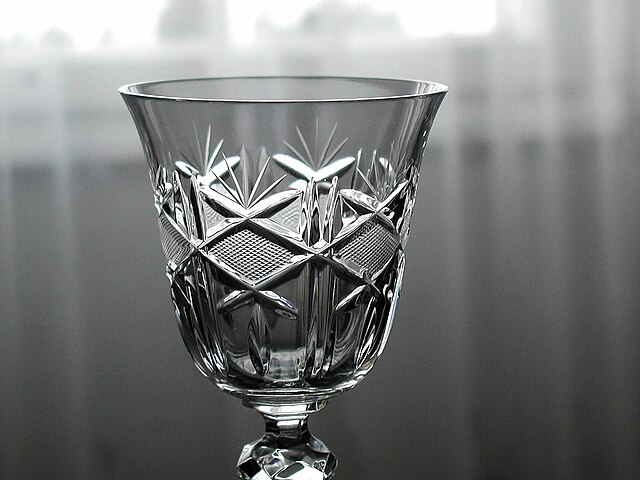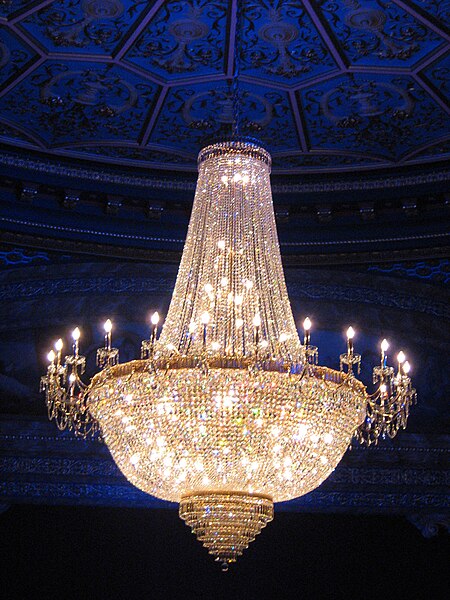Art glass is a subset of glass art, this latter covering the whole range of art made from glass. Art glass normally refers only to pieces made since the mid-19th century, and typically to those purely made as sculpture or decorative art, with no main utilitarian function, such as serving as a drinking vessel, though of course stained glass keeps the weather out, and bowls may still be useful.
New England Glass Company vase, 1886–88, in blown "Peach Blow" glass, with gold enamel paint.
Detail of art glass sculpture.
Favrile glass vase by Louis Comfort Tiffany
"Imperial Glass Bowl" Moulded glass art by Csaba Markus.
Cut glass or cut-glass is a technique and a style of decorating glass. For some time the style has often been produced by other techniques such as the use of moulding, but the original technique of cutting glass on an abrasive wheel is still used in luxury products. On glassware vessels, the style typically consists of furrowed faces at angles to each other in complicated patterns, while for lighting fixtures, the style consists of flat or curved facets on small hanging pieces, often all over. Historically, cut glass was shaped using "coldwork" techniques of grinding or drilling, applied as a secondary stage to a piece of glass made by conventional processes such as glassblowing.
Bowl of a wine glass in typical cut glass style
Cut glass chandelier in Edinburgh
Chandelier in the chapel of Emmanuel College, Cambridge, donated in 1732, one of the earliest datable cut glass examples. The shape follows contemporary brass examples, with glass branches but no "drops"; only the pieces down the stem are cut, mostly with flat facets.
Pair of Regency chandeliers in Saltram House, England








